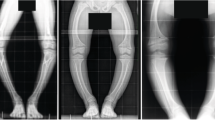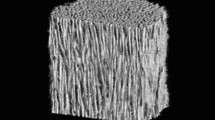Abstract
The purpose of this study is to investigate the use of a three-phase bone scan for early detection of HO formation and as a method of evaluating Didronel treatment.
A marked vascular blush and blood pool was noted about the hips sometimes with a normal bone scan and normal X-ray of the hips. This appeared to represent the precursor phase of HO formation since, on repeat scans, the bone scan showed accumulation of the bone-seeking radionuclide usually in 2 to 4 weeks and the X-ray revealed ossification.
Fifty-two patients treated with Didronel between October 1978 and December 1979 were reviewed to determine the value of Didronel treatment.
There were 23 patients in the series who either showed HO by X-ray on admission or developed HO on follow-up X-rays before beginning Didronel therapy. A three-phase bone scan revealed increased vascularity and accumulation of radioactivity on the bone scan in all areas of ossification on the X-ray and in some areas that did not appear to be involved. The other 29 patients had serial three-phase bone scans, X-ray study, and an alkaline phosphatase determination at approximately 2-week intervals.
Didronel treatment was started as soon as the precursor phase of HO was demonstrated on the three-phase bone scan in most of these patients. Nine have not developed ossification that could be seen in X-rays during 3 months of continuing study.
Six patients seen at follow-up during the past year had known HO of 4 to 7 years' duration. The three-phase bone scan was used to predict the maturity of HO in these patients.
Our study indicates that increased vascularity precedes rather than being secondary to HO formation as is suggested in the literature. Didronel treatment appears to be most effective if initiated during this precursor phase.
Similar content being viewed by others
Log in or create a free account to read this content
Gain free access to this article, as well as selected content from this journal and more on nature.com
or
References
Francis, M D, Russell, R G G & Fleisch, H (1969). Diphosphonates inhibit formation of calcium phosphates in vitro and pathological calcification in vivo: Science, 165, 1264.
Hsu, J D, Sakimura, Ivan & Stauffer, E S (1975). Heterotopic ossification around the hip joint in spinal cord injured patients. Clin. Orthop., 112, 165–169.
Rosenthall, L & Kaye, M (1976). Observations on the mechanism of 99mTc-labelled phosphate complex uptake in metabolic bone disease. Sem. Nucl., Med., 59–67.
Rossier, A B, Bussat, P H, Infante, F, Zender, R, Courvoisier, B, Muheim, G, Donath, A, Vasey, H, Taillard, W, Laiger, R, Gabbani, G, Baud, C, Pouezat, J A, Very, J M & Hachen, H J (1973). Current facts on para-osteo-arthropathy (POA). Paraplegia, 11, 36–78.
Russell, R G G & Smith, R (1973). Diphosphonates. J. Bone Joint Surg. (Br), 55-66.
Subramanian, G & McAfee, J G (1971). A new complex of 99mTc for skeletal imaging. Radiology, 99, 192.
Wharton, G W (1975). Heterotopic ossification. Clin. Orthop., 112, 142–149.
Author information
Authors and Affiliations
Rights and permissions
About this article
Cite this article
Freed, J., Hahn, H., Menter, R. et al. The use of the three-phase bone scan in the early diagnosis of heterotopic ossification (HO) and in the evaluation of Didronel therapy. Spinal Cord 20, 208–216 (1982). https://doi.org/10.1038/sc.1982.39
Issue date:
DOI: https://doi.org/10.1038/sc.1982.39
Keywords
This article is cited by
-
Heterotopic Ossification After Spinal Cord Injury: Current Clinical Approaches
Current Physical Medicine and Rehabilitation Reports (2020)
-
The added value of SPECT-CT in the detection of heterotopic ossification on bone scintigraphy
Skeletal Radiology (2020)
-
Pelvic heterotopic ossification: when CT comes to the aid of MR imaging
Insights into Imaging (2013)
-
Heterotopic ossifications following implant surgery—epidemiology, therapeutical approaches and current concepts
Seminars in Immunopathology (2011)
-
Diffuse Pulmonary Uptake of Tc-99m Methylene Diphosphonate in a Patient with Non-tuberculosis Mycobacterial Infection
Nuclear Medicine and Molecular Imaging (2010)



